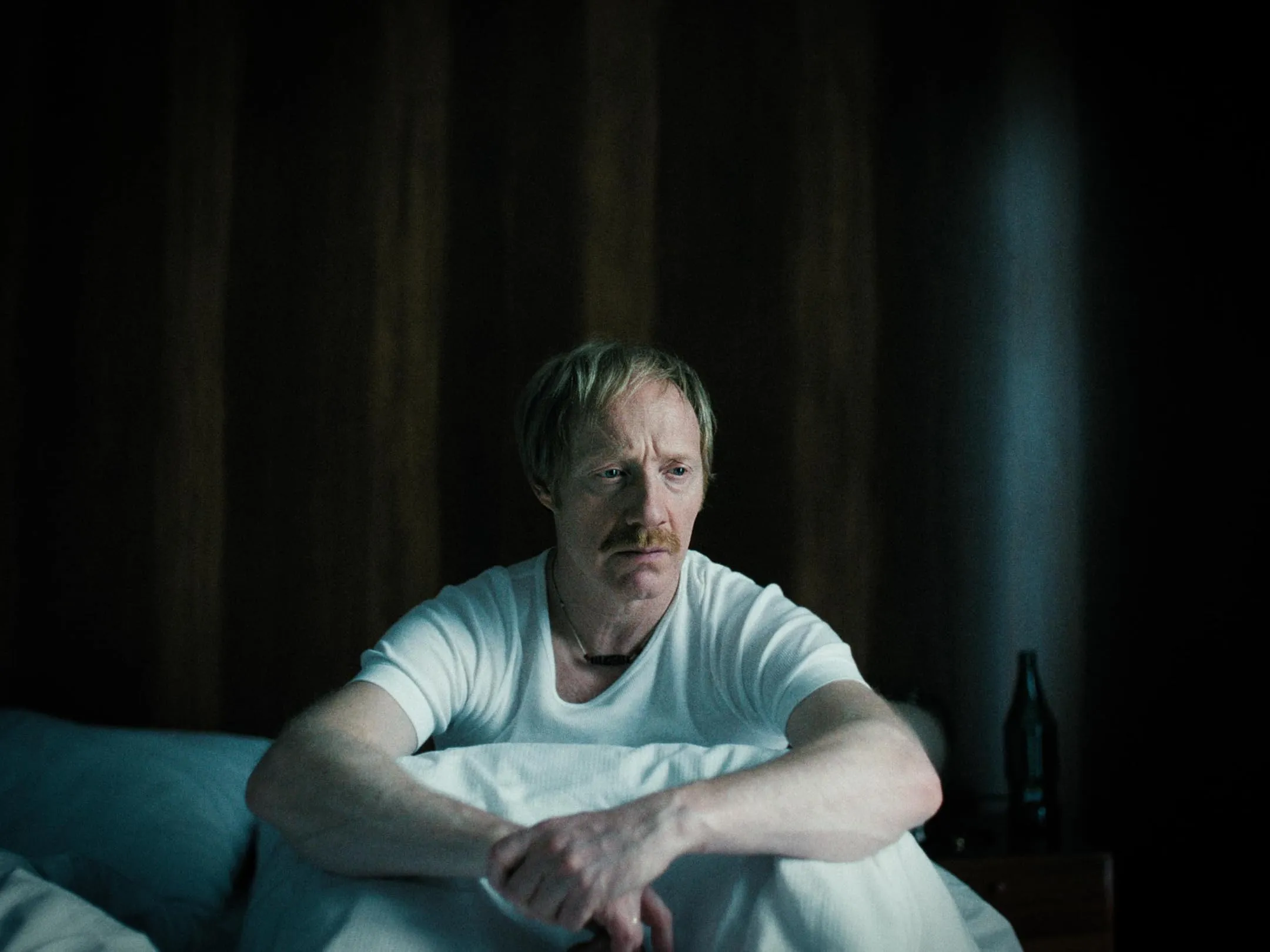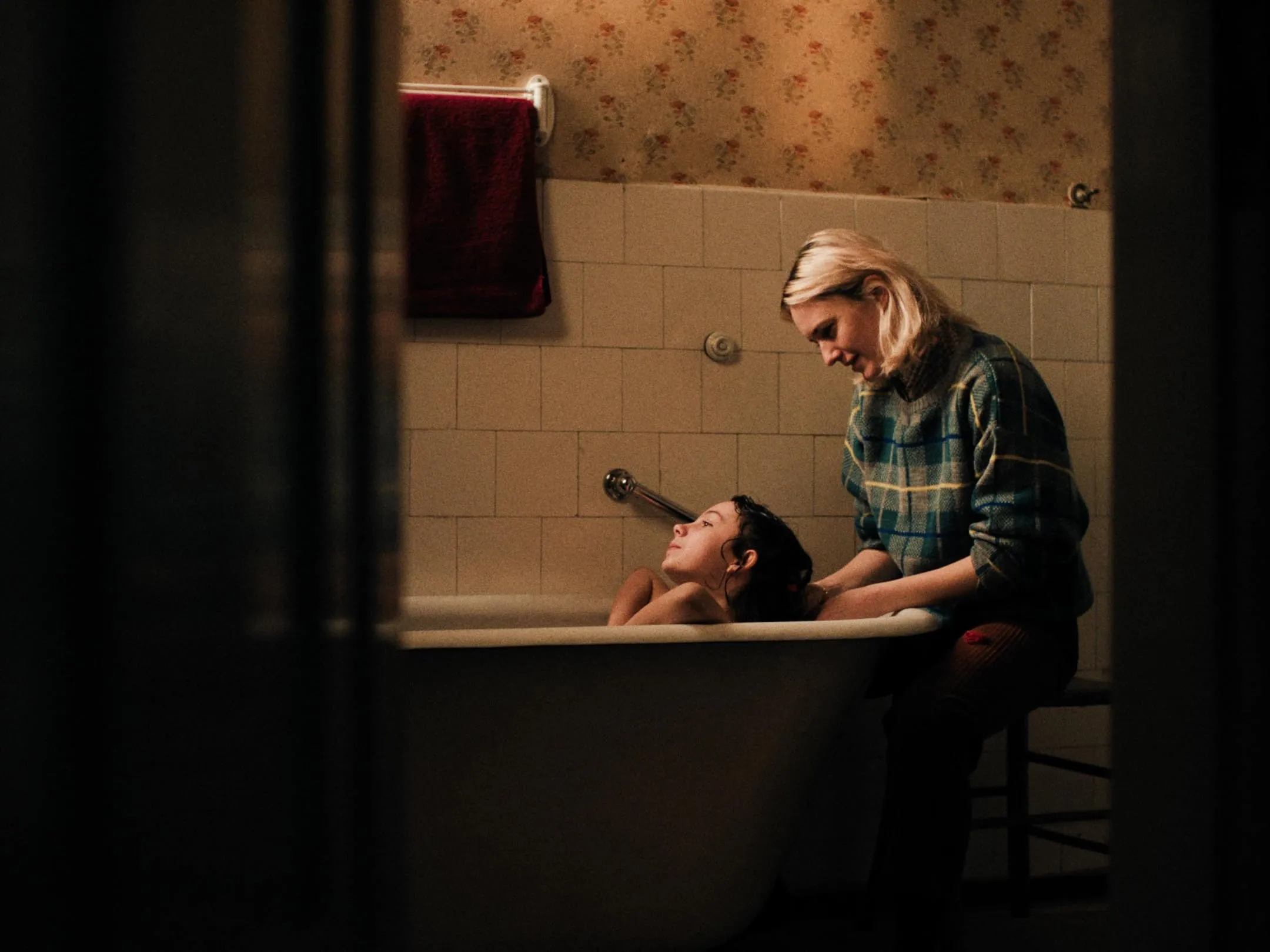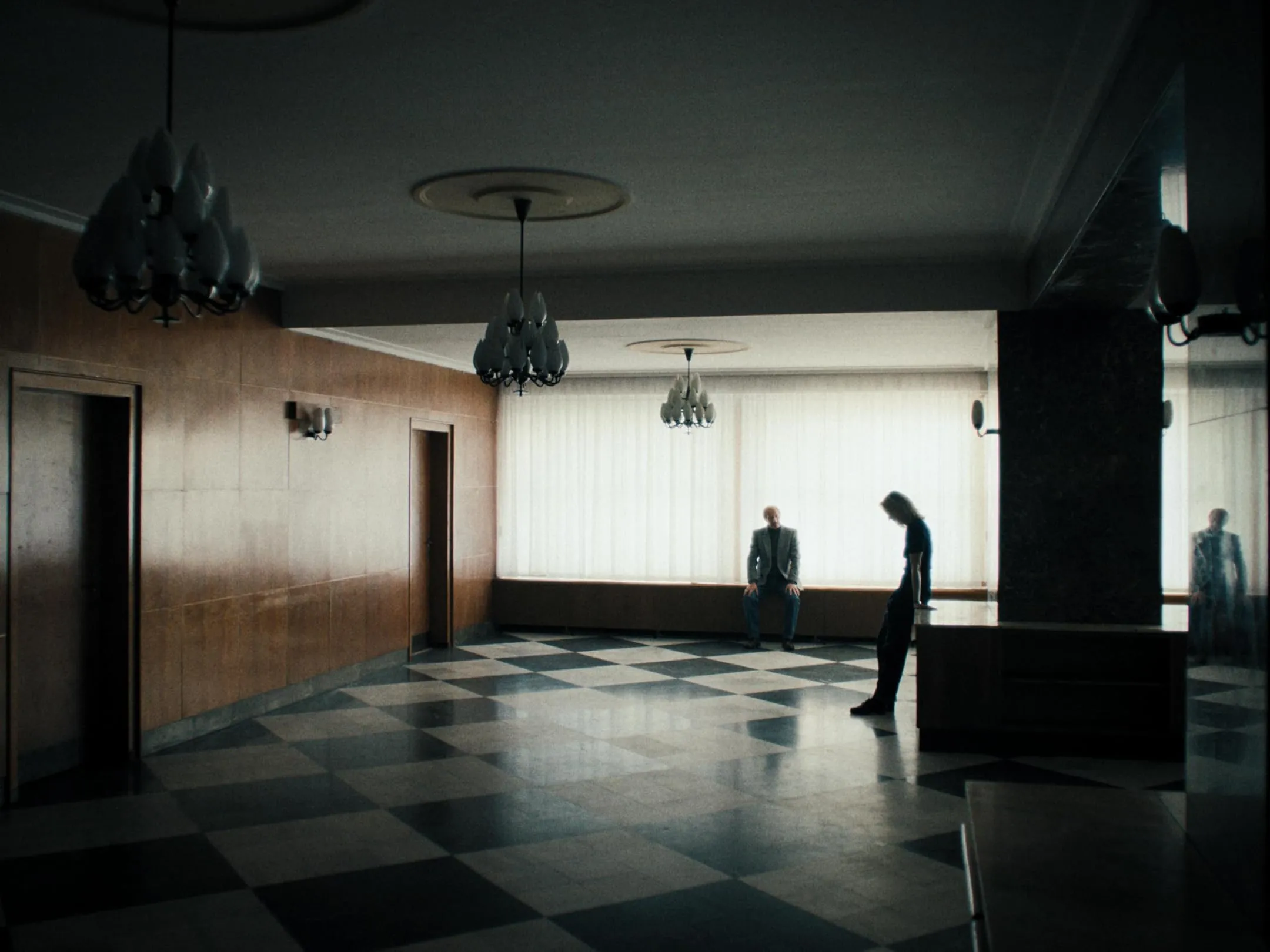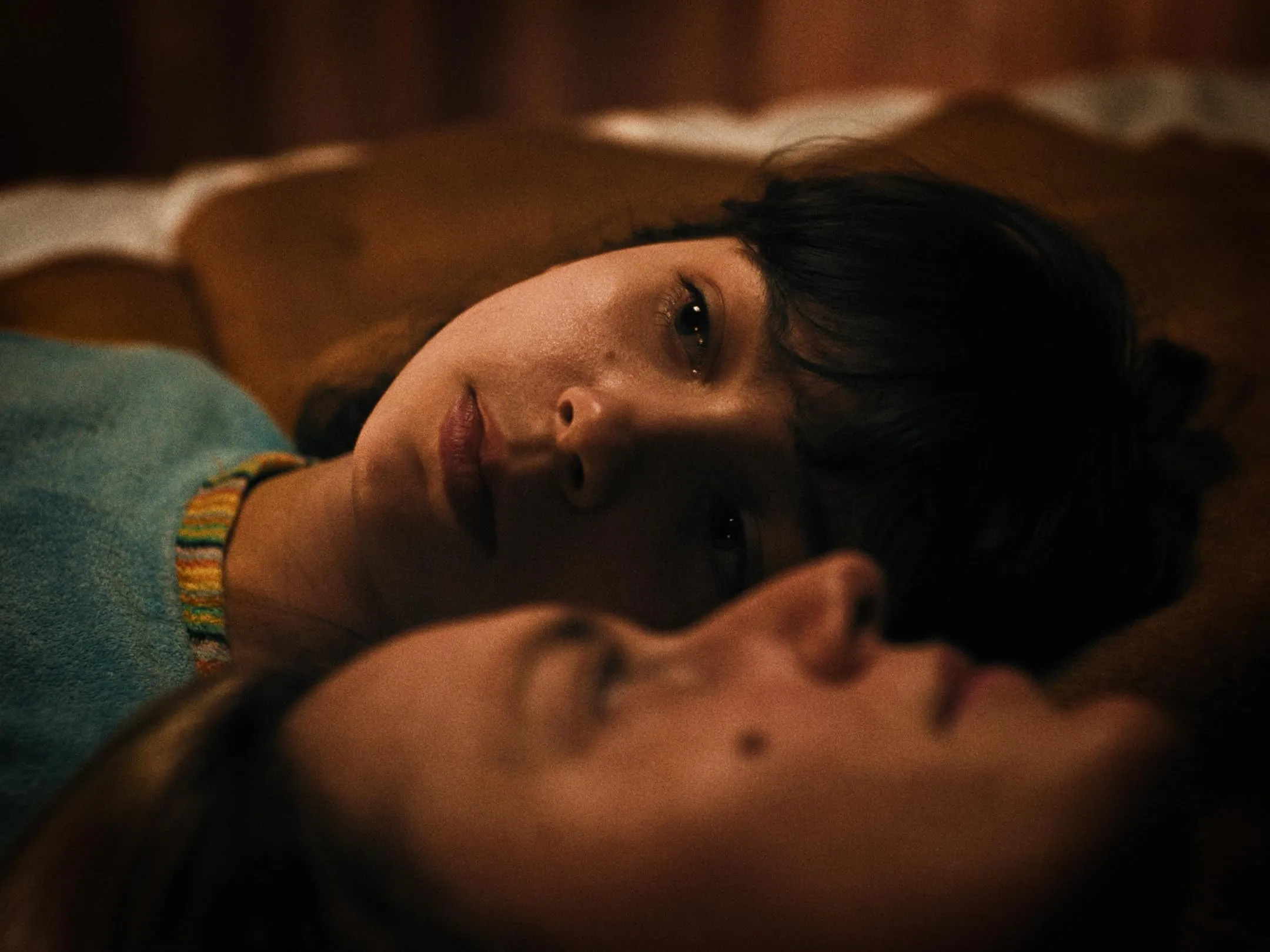In 1980s Vienna, the urban pulse races against a frozen backdrop where memories of a repressive regime seep from every corner. Against this cityscape, Perla emerges: a resolute artist and single mother whose life mirrors a canvas brushed with shades of defiance and lingering sorrow.
Born from a past marred by turbulent migrations, she carves out existence within the city’s creative quarters while the austere reality of her origins in Communist Czechoslovakia silently demands recognition. A startling call from those buried memories stirs her inner sanctum, setting in motion an inevitable reckoning with personal ghosts that both inspire and fracture her spirit.
The film casts its narrative in a chiaroscuro of personal drama interlaced with the stifling political atmosphere of its time. As the subtle strains of music echo through dim corridors and sunlit alleyways alike, each frame confronts the viewer with the weight of forgotten promises and the quiet despair of possibility lost. In this space, Perla’s internal struggle unfolds: a confrontation with the very essence of what it means to live in the half-light of hope and regret. The immediacy of her emotional turmoil invites contemplation over the unyielding hold of memory and the ceaseless burden of lived experience.
Temporal Labyrinths of the Self
The film unfolds in a series of epochs, beginning with a cold, archival whisper from 1968—a spectral broadcast that hints at the oppressive regime lurking behind iron-clad barriers—before shifting to the charged atmosphere of 1981 Vienna. This initial whisper silently sets the stage for the cascading narrative that follows.
In Vienna, Perla finds herself suspended between two realms: a self-fashioned life of artistic splendor and a haunting past reawakened by a disquieting call from an ex-lover. That call, shrouded in mystery and suffused with the weight of unspoken debts, irreversibly tilts the axis of her existence.
The film paints with broad, contrasting strokes: one moment, the colorful dynamism of Vienna’s creative pockets glistens under city lights; the next, the somber, stark terrain of her origins in a controlled state casts long shadows. This interplay of dual realities charts a course that is as unpredictable as it is inevitable.
A sudden message—an inciting event that cracks open the veneer of normalcy—ushers in the reckoning of past transgressions and unresolved sorrows. Scenes marked by the delicate strains of a piano recital give way to the harsher silence of Kosice, where every frame vibrates with underlying tension.
The pace shifts in tandem with Perla’s inner turmoil: quiet, measured sequences of introspection are abruptly disrupted by moments of raw, unguarded emotion—a confrontation with Josef’s steadfast presence, the re-emergence of Andrej as the specter of former life, and the interlacing threads of Julia’s own fragile reality.
In this rhythmic interplay, the secondary narratives of those around Perla do not merely echo her plight; they contribute to a complex layering that hints at the ceaseless struggle against internal fragmentation. Here, the passage of time functions as both a gentle reminder of memory’s persistence and a stark critique of human fallibility, inviting the viewer into a realm of endless self-questioning and wistful, unresolved doubt.
Shattered Mirrors: Character and Performance
At the heart of the film stands Perla, whose life is an ever-shifting mosaic of escape and reinvention. Once a refugee fleeing a repressive regime, she has painstakingly reconstructed herself in Vienna as a tender-hearted creator and nurturing parent.
Yet beneath her determined exterior lies an unspoken agony—a series of hidden wounds, including a hinted assault and deep-seated guilt that sporadically impairs her judgment. Her past is not a distant memory, but a recurring shadow that disrupts the fragile peace she has built.
Julia, the gifted daughter whose deft fingers coax melodies from the piano, encapsulates both the promise of a reimagined future and the burden of inherited sorrow. Her yearning for stability starkly contrasts with the turbulence of her mother’s impulsiveness, generating a tension that speaks to the uncertainty of familial legacies.
Meanwhile, Josef emerges gradually from the periphery of Perla’s chaotic world into a figure providing cautious reassurance. His unwavering presence is marred by his own unvoiced emotional needs, highlighted by an internal struggle between the allure of stability and the pull of Perla’s elusive past.
Then there is Andrej, the embodiment of bygone intimacies, whose reappearance stokes the embers of unresolved emotions and latent guilt. His presence ignites a stark reminder of a time when love and pain were indistinguishably intertwined, complicating the already precarious balance within Perla’s life.
The actors inhabit these intricate roles with intensity, their performances punctuated by subtle shifts—a fleeting glance, a pause that speaks volumes, and a hesitance that betrays hidden scars. The interplay between Perla and Julia radiates a quiet desperation, while the tension with Josef and Andrej transforms every charged exchange into an inquiry into the human condition. In this space, each character mirrors a fragment of the self, presenting a dynamic tableau of trauma and survival that challenges the viewer to question the very nature of identity.
Framing Shadows: Cinematic Techniques and Production Design
The film presents a stark counterpoint between the effervescent energy of 1980s Vienna and the suffocating gloom cast by Czechoslovakia’s austere reality. Sunlit city streets laden with artistic fervor yield to unsettling, mute corridors of a state dictated by suppression. An opening lake view, rendered with a serene, almost ghostly clarity, establishes the tone—a moment suspended in time that hints at the turbulent undercurrents to come.
Camera movements are deliberate, each frame a measured brushstroke capturing the subtle play of emotions. One observes a prolonged, unmoving shot that seizes a critical moment of violation—a freeze of shock and vulnerability—inviting the viewer to linger amid the raw tension. The framing isolates characters in spaces that speak of isolation, forcing an intimate scrutiny of their inner hesitations and indeterminate expressions.
Set design is a study in contrasts: meticulously assembled period costumes and carefully selected props evoke a bygone era, lending a palpable texture to every scene. The affluent, almost theatrical interiors of Vienna clash with the stark, functional spaces of her birthplace, each detail echoing a deeper historical sorrow. Mirrors, dimly lit halls, and carefully arranged color schemes function not merely as decorative elements but as symbols of the fractured self—a visual dialogue between dual identities and unspoken conflicts.
The soundscape, measured and sparse, mirrors the fractured psyche of the protagonist. A percussive score, intermittent and haunting, underscores the creeping unrest within the narrative. Whispered fragments of dialogue, intermingled with vast stretches of thoughtful silence, allow the viewer space to confront their own reflections on loss and absence. Each auditory cue becomes a meditation on the fleeting nature of security, inviting a silent inquiry into the relentless nature of personal and historical memory.
Specters of Identity and Echoes of the Past
In this film, the confrontation of self with history arises as a central theme—a dialogue between what is remembered and what is left behind. Perla’s life is marked by the tension of a past rewritten to serve as a shield against pain.
As an émigré escaping the clutches of totalitarian control, she creates an existence that seems free yet carries the silent toll of exile. This inner conflict, where the fugitive past intermingles with present choices, becomes a canvas for the portrayal of duality and displacement, where the constructed self is both refuge and prison.
The scars of trauma are indelibly inscribed in moments of quiet despair and sudden eruption. Silent flashbacks reveal the raw imprint of experiences during her flight and subsequent hardships, shaping her into a figure caught in an endless struggle between confronting sorrow and suppressing it.
Her art emerges as a poignant echo of her inner world—a series of expressions that mirror suffering and a hopeful yet uncertain resilience. The brushstrokes on her canvases, laden with symbolic imagery, speak a language of loss and redemption that transcends spoken words.
Within the sphere of motherhood, Perla’s choices create a nuanced interplay of duty and defiance. The film also hints at the pervasive influence of a repressive regime, a silent specter that continuously informs the characters’ emotional and cultural burdens.
Silent Harmonies: A Director’s Vision
Alexandra Makarová crafts an experience where intimate history and the weight of shared memory whisper in every frame. Her personal narrative, born of lived experience and quiet defiance, colors each scene with an undercurrent of unresolved longing.
Makarová shapes a film that, at moments, feels like a reflective study of personal unrest, and at others, a suspense-filled odyssey into the murk of forgotten truths. Her deliberate pacing—marked by archival snippets and moments stamped in time—offers a pulse that mirrors the unsteady heartbeat of internal conflict.
The director employs a restrained style in scenes of heightened emotion, allowing silence and fleeting glances to speak as forcefully as any dialogue. Each shot appears as if composed with the precision of a timeless painting, inviting interpretation without dictating meaning. The careful balance of imagery and sound invites viewers to trace the subtle interplay between light and shadow, a visual whisper hinting at personal strife and resilience.
In this tapestry of visual storytelling, every detail coalesces, reflecting a singular vision that is deeply personal yet universally inclined toward the mysteries of memory, trauma, and the constant search for self-understanding.
Full Credits
Director: Alexandra Makarová
Writer: Alexandra Makarová
Producers and Executive Producers: Sabine Gruber, Arash T. Riahi, Ruth Beckermann, Tomas Krupa
Cast: Rebeka Poláková, Simon Schwarz, Hilde Dalik, Noel Czuczor, Ivan Romancík, Zuzana Konecná, Bence Hégli, Carmen Diego, Frantisek Beles, Ingrid Timková, Ivan Sándor
Director of Photography (Cinematographer): Georg Weiss
Editor: Joana Scrinzi
Composers: Rusanda Panfili, Johannes Winkler
The Review
Perla
Perla stands as a somber meditation on the interplay between past and present, memory and loss. The film fuses personal sorrow with a stark historical landscape, displaying moments of raw vulnerability and artfully measured restraint. Its deliberate visual narrative prompts a deep exploration of identity in exile and the quiet scars of trauma.
PROS
- Gripping exploration of memory and identity
- Thought-provoking narrative interlaced with historical nuance
- Powerful, introspective performances by the lead and supporting cast
- Striking visual aesthetics and careful production design
- Sound design that reinforces the emotional depth of the film
CONS
- Deliberate pacing that may test some audience patience
- Ambiguities in the plot that leave certain elements unresolved
- Occasional detachment in the narrative tone
- Complexity that might challenge casual viewers




















































